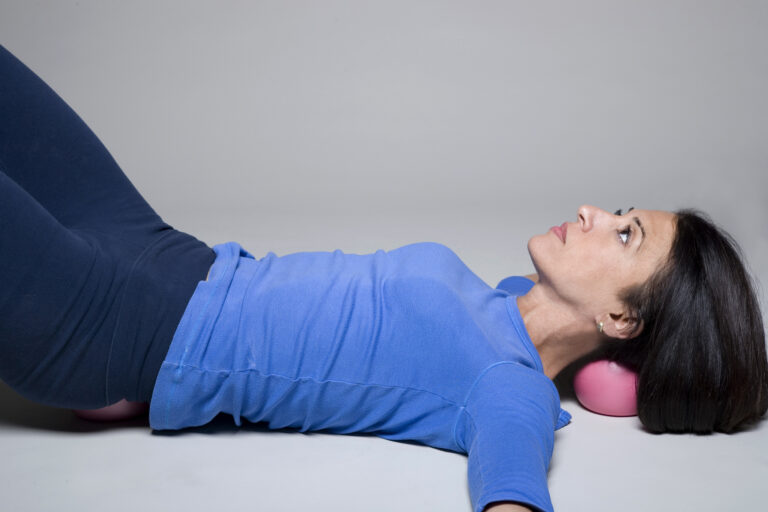In this Blog I’m speaking of muscular tension. One of the biggest—and I would say most dangerous—ideas that comes out of the “relax, release, and let go” movement in the world of health and fitness is that tension is bad.
I believe this is really just a communication issue. There is nothing wrong with the words relax, release, and let go. In fact, deep relaxation has a profound effect on the health and well-being of both mind and body.
Release and let go are words that suggest relaxation. These are emotional states of mind that affect the physical body. We crave the feeling of relief, release, letting go. You do have physical tension when you are feeling relaxed and released.
Have you ever watched someone fly a kite? The wind is taking the kite in all different directions while there is a person on the other end holding the string. What if they let go? They lose the kite. That’s not good.

The tension in the string between the person and the kite is what makes it enjoyable. Your muscle tension is the same way. You are connected to your body through this muscular tension. You also get feedback through this tension. There is a range of muscular tension. Just like holding that kite, if the wind changes or there’s no wind, your experience will change.
Feedback from the body becomes recognizable again with the Miracle Ball Method. It will help you make essential corrections based on feedback from our muscular tension and how to allow your body to make adjustments. But since most of us think tension is bad, we simply let go of the kite. In the case of our body, we also try to let go of the tension. This ideology that no tension is your objective will make it harder to get long term relief from challenges like sciatic pain, low back aches, neck tightness and rotator cuff issues, and much more than these.
The problem is people assume that “no tension” is the goal. While excess tension can be extremely painful, no tension at all can be just as painful. Can you tell the difference?
Try this:
- Make a fist with your hand and hold it for a few seconds. That requires tension.
- Now slowly stop making a fist and notice the feeling in your muscles changes as the tension lowers.
- Now flatten your hand as if you were stretching out your hand to show someone 5 fingers
- Then let it go limp at the wrist.
In these few examples you can feel some range of tension. You can explore tension with any part of your body. Your pelvis, legs, feet, all use tension of with different effort when you move. What makes it interesting is how all parts coordinates. It’s quite complex and yet most of us never notice how amazing our body makes all kinds of adjustments each day through tension. It communicates to us.
Why Tension Matters
Tension supports many aspects of your body in very positive ways:
- It coordinates movement, digestion, and circulation.
- Your diaphragm, your breathing muscles, and your vision muscles all rely on tension.
So how do we experience tension?
Over the years of teaching, I noticed that when people’s bodies began to move differently, they often thought something was wrong. They were simply feeling tension in parts of the body they had never noticed before.
Instead of seeing this as progress, they dismissed it—believing they had misunderstood the directions or that no tension was the goal.
But even in classes designed for deep relaxation, there is always some tension. The difference is that it doesn’t distract you negatively, so you interpret that as having no tension at all and that it’s a good thing then to have no tension to feel good.
What About Exercise?
What do you say to an athlete or a weekend warrior who wants to push their body through all kinds of movements? Can you really do that with “no tension”?
Not at all. Tension is your friend.
Excess muscle tension may cause backaches, shoulder stiffness, or repetitive stress injuries. But no tension—being deconditioned—can cause the very same pain, if not worse.
Your body is always using tension, right now as you read this. We don’t usually notice it, because we aren’t designed to feel every single muscle working. We tend to notice tension when something is out of sorts. That’s the body’s way of giving us feedback.
And when we work hard—whether in sport, dance, martial arts, or gardening—tension allows us to feel all the muscles of the body coordinating movement.
Learning From Tension
To conclude: get more in touch with what your range of tension feels like, by simply sensing your physical body. That’s how your nervous system communicates with you. Some parts might stand out, and other parts not so much.
Often, the parts of your body that you don’t feel—the ones you dismiss—may actually be the source of pain in other areas.
The body is not looking for perfection, but for possibilities. That’s how you first learned to move: to lift your head, you pressed down; to look around, you were motivated to explore.
Be motivated now. Notice when you use too much tension. Notice when you can invite more tension into areas you’ve ignored.
Especially when using the Miracle Ball Method—placing the balls under key areas of the body—you may begin to feel parts of yourself in new ways. After being on the balls is the perfect time to get up, take a walk, and feel how your tension stretches, elongates, and connects throughout your whole body up into space and down into the floor. Your body knows how to move, enjoy the feedback, and be responsive.
Your Body Is Not Looking for Perfection, but for Possibilities


